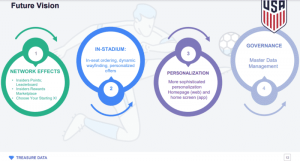You loved an article on Buzzfeed when you were travelling and it reminded you of your best friend (John for instance). You clicked on the ‘share’ button of your smartphone and sent it to his WhatsApp account. Sounds like an everyday situation right?. John clicks on the link and enjoys reading the article and shares it with his other friends via chat. Win-win situation for everyone?
How do you think the traffic would be tracked for Buzzfeed for this article? Would it be under social (as it was shared via IM’s and Messenger as they are a social medium of communication)? This would be the ideal case, however this is not how your analytics sources actually track this data. This will show up in some other category, or to be more specific for this particular BuzzFeed article, it would be tagged under ‘Direct Traffic’. In this post, we will try to reason why this happens and how it is impacting how you are actually measuring your website performance the traditional way

What is Direct Traffic?
Direct Traffic can mean a lot of things according to Google Analytics (or any other web analytics tool you might be using). Ideally it means people typing your the URL of your website directly in their browser and navigating to your website. However, in many of the scenarios, the referrer is not able to send the tracking information to your website and in such cases, the traffic gets bucketed under ‘Direct Traffic’. Some example scenarios include:
- A user clicked on your website link inside a PDF (or any internal document) which does not send referrer information to your website
- Someone setting your website homepage as their default load page. This is not a normal scenario if you are a business website and mostly would be done by your IT team for all the people working for your business. In such a scenario, I recommend you block the internal traffic which would over-inflate your traffic numbers and might not be really helpful in showing the true picture. If you are using Google Analytics, they have a support guide on how to do it step by step
- Someone clicking on your website via email footer/signature
- User bookmarks your website or types your URL directly in the browser
The Emergence of ‘Dark Social Traffic’
These are the texbook definitions of how can Direct Traffic can occur. However, with the emergence of social media and personal communication apps, this definition has changed over the years. So John’s friends from the above example can browse or discover the website in many ways like:
- John shares the article link on WhatsApp (or other personal chat apps like Hangouts,Line,Skype)
- John shares it on Facebook Messenger, and reads it on Facebook’s internal app browser
- John is an old-school guy who still shares the articles via Email
- John finds an article on a website which is secured (HTTPS) and redirects it to the article website which is not secure (HTTP only)
These examples are not direct in nature but still get tagged under Direct Traffic for your website. Such traffic which cannot be determined through it’s referrer but is social in nature is called ‘Dark Social Traffic’. The term originated in 2012 via a post in The Atlantic by Alexis Madrigal where he consulted with data experts at ChartBeat & questioned about the fact as to why the web analytics traffic is not considering traffic from IM’s which was very much on the rise during that time.
ChartBeat did a study in Dec 2014 where they studied the recent impact of such a traffic and found out that more than 25% of the external traffic does not have a referrer tagged and this pattern is observed higher when coming through mobile devices
 Source: ChartBeat
Source: ChartBeat
Dark Social + Dark Search
Is there more to Dark social than just the untraceable IM messages and private conversations which gets attributed to Direct Traffic? In 2013, Quartz presented the stats for it’s website claiming social media as the major referrer to their website. However, they divided this in to two categories: ‘Light Social’ and ‘Dark Social’
What is ‘Light Social’ traffic?
Light social traffic is anything which is getting tracked from Social Media and is easily viewed in your analytics platform (In Google Analytics that would be under ‘Acquisition’ –> ‘Social’)
What is ‘Dark Social’ traffic?
It is the opposite of Light social traffic and anything which does not pass referrer attribution to your analytics platform.Between 25 to 30% of Quartz Traffic was coming from this source. Imagine such type of scenario being wrongly attributed for your business?
We tried a similar experiment for our blog looking at the data for the last 3 months keeping only ‘Direct Traffic’ as a source of traffic in Google Analytics. The result was similar for our scenario as well.

20% of our Direct Traffic actually make sense
Out of the overall visits to our blog, 15% visits comes to us as Direct traffic. However, only 20% visits are those visits which include the home page (blog.digitalinsights.in) or any of our category pages like Social Media Campaigns. Typing a long url such as blog.digitalinsights.in/apps-tools-to-create-custom-tabs-for-facebook-business-pages/0580787.html seems highly unlikely for any user to do and I am assuming a modest range of 5% users who might have bookmarked that link to come back later to that post
So we are actually wrongly bucketing 12% of our overall traffic in to ‘Direct Traffic’ which could be a potential for Dark social or Dark Search.
I got ‘Dark Social’ Traffic, but what the hell is ‘Dark Search’?
A major debate not so long ago was upon internet privacy with the facts about NSA and Snowden showing up. The concerns about Google and other search engines tracking our each and every online move were heavily growing and users were shifting to a more secure way of browsing the internet. This led to the surge in popularity of search engines like DuckDuckGo which does not track user data to provide personalized search results and focuses on search privacy instead. This also makes it a nightmare for referral traffic as it rips off all the referrer information if a user finds your website on duckduckgo. This search traffic gets bucketed under ‘Direct’ instead.
Many websites have also adopted the HTTPS protocol to make their users feel secure about their data and information. This also adds up to direct traffic as these secure sites do no pass referrer data to non-secure sites for security reasons. Facebook,Twitter & other social networks although are exceptions to this rule as they use redirect scripts to pass referral data as they have to showcase the ability to drive traffic to your business.Who will invest in Facebook, Twitter if you can’t even measure if people are coming to your website via these social channels?
Wikipedia is also making efforts to anonymize traffic by taking first steps of switching browsing activity of logged in users on Wikipedia to HTTPS. This might end up being implemented to the overall site as we progress and would certainly end up in our ‘Direct Traffic’ category
How to fix this?
Businesses have started realizing this fact and are making attempts to make this tracking right without affecting user information. Facebook for instance, announced recently about a fix to their Facebook mobile app which was posing problems of direct traffic to many publishers. The fix was done for iOS and would soon follow for their Android App.
UTM tag everything
Tagging can be a pain for most of the marketers. But to reduce this wrong attribution, it is imperative that you tag everything under the sun while posting on each channel.
Have your website under an ebook PDF? Tag that
Your web url in an email signature? Tag that as well
Posting on social media channels? Tag that
If you are using a Chrome browser, this extension makes it easier for you to build UTM links. Shortening this links will also help in creating an extra layer of protection around the tags and would be short enough for users to be shared across their private networks without having to worry about long tail url’s
Boost your social sharing
One more way to look at avoiding people copy-pasting your links and sharing it on private networks is encouraging social sharing. This includes precise placement of share icons on your post which lets the user see the sharing icons at all times. One of the examples of this was implemented by LA Times with sharelines suggesting users to share pre-defined snippets on their social channels.
Services like Tynt have been trying to solve the copy-paste problems which attribute majority of the dark social traffic. Tynt allows you to attach meta-data to the text any user copies from your blog with a url.
There is a WordPress plugin for Tynt to make it easier for your blog.
Publishers are also seeing large number of shares via WhatsApp. You can try to integrate WhatsApp sharing within your sharing buttons. If you would like to get started, you can get one here.
Smart Link placement
Smart Link placement gives the power to you to decipher which links are coming from where in Google Analytics. For example, Instagram allows to place a link on your profile, this url which you would be placing on your profile should be unique to Instagram only. This would serve two purposes:
You would be able to attribute correct traffic coming to each channel if you create channel specific url’s to important websites which do not pass referrer information & you can make the communication specific to people coming from those channels only.
So if you put http://yourwebsite.com/instagram as a profile link to your Instagram account, You can then check users landing on this page from Google Analytics landing pages report and be able to correctly attribute traffic to each channel (in this case ‘Instagram’ or ‘Social Media’)
Correlate & Decipher:
Look for the long URL’s within your articles. Chances are, people do not type them individually in to the browser and are the potential suspects of majority of the dark social traffic within Direct Traffic. Try to correlate those numbers with other social networks over time to gauge a pattern & see if you can decipher which channel is it likely to come from.
Conclusion
Dark Social has emerged in the last decade & will always be there unless we find a way to correctly attribute everything to everywhere (which looks a distant possibility with the choices of networks and privacy issues everywhere). However, with some common sense and data patterns, we can surely make some inroads in to this phenomenon and won’t attribute all our success to’Direct Traffic’.
It’s time to give credit to Direct Traffic only where its due!
Have you experienced this type of traffic anomalies for your data-set? What measures have you taken to uncover it?
Let us know in the comments section!
(204)









